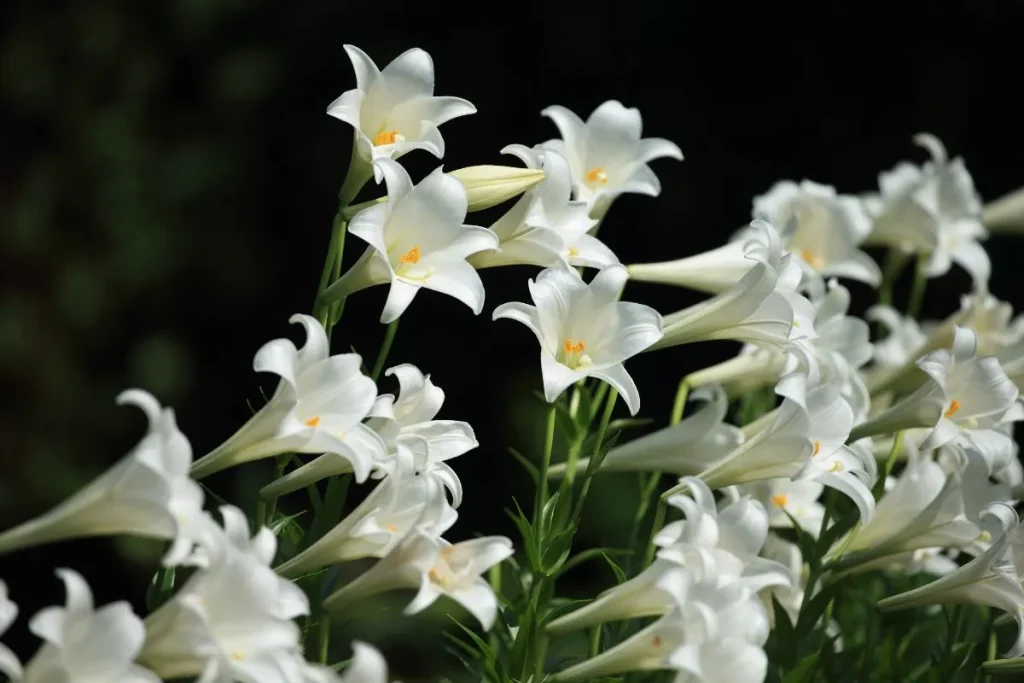The Easter Lily Vine blooms around Easter each year. This timing is fascinating. How does it know when to flower?
Photoperiodism: The Light Guide
Photoperiodism is key. It means plants react to daylight. The Easter Lily Vine senses day length. Longer days signal the plant to bloom. This usually happens in spring.
Understanding Photoperiodism
Plants have light receptors. These detect changes in daylight. The Easter Lily Vine uses these receptors. They help track the length of the day.
Temperature Cues: The Warmth Factor
Temperature also matters. Warmer days encourage blooming. The Easter Lily Vine responds to rising temperatures. Spring warmth signals the plant.
The Role of Temperature in Flowering
Warmer temperatures boost plant metabolism. This helps the vine prepare to flower. Together with longer days, warmth triggers blooming.
Hormonal Changes: Internal Triggers

Plant hormones control flowering. They respond to light and warmth. The Easter Lily Vine’s hormones trigger blooming.
Key Hormones in Flowering
- Gibberellins: Promote stem growth and flowering.
- Auxins: Regulate cell growth and bud development.
- Cytokinins: Encourage cell division and flower growth.
- Ethylene: Influences flowering and fruit ripening.
Genetic Factors: The Blueprint of Blooming
Genetics play a role. Specific genes control flowering time. The Easter Lily Vine’s genes respond to environmental cues.
The Genetics of Flowering Time
Floral integrator genes regulate blooming. They integrate signals from light and temperature.
The Role of Flowering Locus T (FT) Gene
The FT gene is crucial. It helps initiate flowering. This gene responds to longer days and warmth.
Environmental Triggers: Beyond Light and Temperature
Other factors influence blooming. Water, soil, and air circulation matter too.
Water Availability
Consistent watering supports blooming. The plant needs adequate water to flower.
Soil Quality
Good soil quality is essential. Nutrient-rich, well-draining soil promotes flowering.
Air Circulation
Proper air flow is important. It prevents diseases and helps the plant stay healthy.
Care Tips for Easter Lily Vine
To enjoy blooms, provide good care. Follow these tips.
Light Requirements
- Provide plenty of sunlight. Full sun to partial shade works best.
Watering
- Water regularly. Keep the soil moist but not soggy.
Soil and Fertilization
- Use fertile, well-draining soil. Fertilize during the growing season.
Pruning
- Prune after flowering. Remove dead or diseased branches.
Temperature and Humidity
- Protect from extreme temperatures. Maintain moderate humidity levels.
The Fascination with Easter Lily Vine
The timing of this plant fascinates many. It showcases nature’s precision.
Future Research Directions
More research is needed. We can uncover more about its blooming.
Conclusion: Nature’s Perfect Timing
The Easter Lily Vine’s bloom is a natural wonder. It highlights the beauty of nature’s timing.
By caring for the Easter Lily Vine, you can enjoy its blooms. Celebrate spring with this amazing plant.







